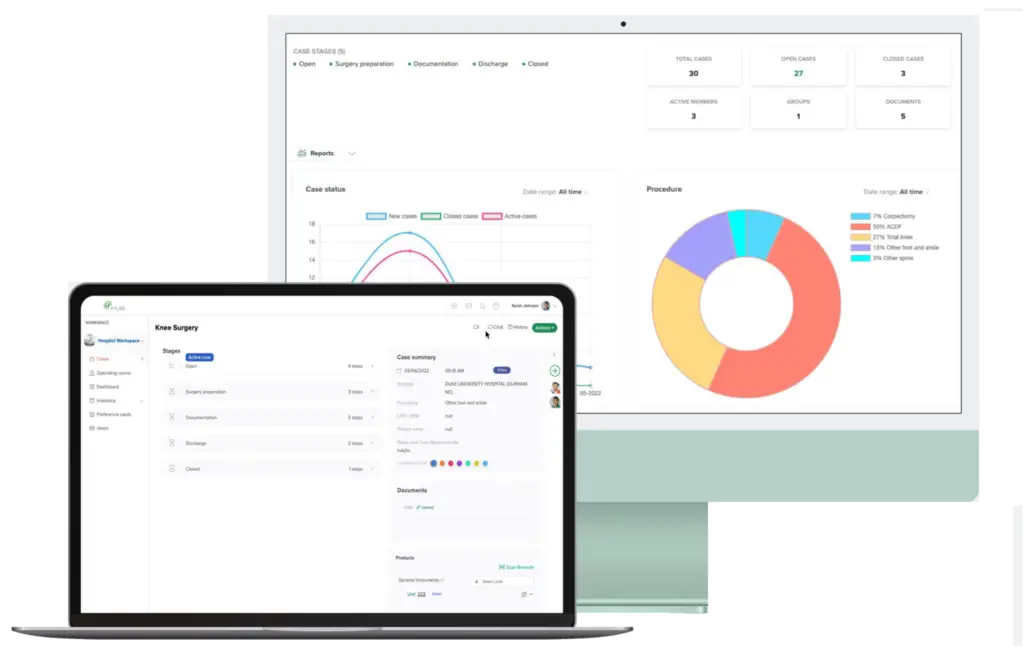In today’s fast-paced healthcare environment, efficiency is paramount. Healthcare organizations are continuously seeking ways to optimize their processes and improve their workflow to enhance patient care and operational efficiency. But what exactly is organizational workflow, and how does it impact the quality of work? In this article, we’ll explore the concept of organizational workflow and its importance in achieving high-quality work in the healthcare industry.
What is Organizational Workflow?
Organizational workflow refers to the series of steps and tasks required to complete a specific process within an organization. It involves the coordination of people, resources, and information to achieve a desired outcome. In healthcare, this could mean the steps involved in patient management, from scheduling and treatment to follow-up and billing.
A well-defined workflow ensures tasks are completed in a logical and efficient manner, with minimal delays or errors. It also allows for better communication and collaboration among team members, leading to improved productivity and work quality.
The Importance of Workflow Optimization
Optimizing organizational workflow is crucial for any healthcare provider aiming to deliver high-quality patient care. By streamlining processes and eliminating unnecessary steps, organizations can reduce costs, save time, and improve the quality of work. For instance, a care coordination platform can significantly enhance the efficiency of patient care pathways.
Workflow optimization also allows for better resource allocation, as tasks are assigned to the most suitable team members based on their skills and availability. This leads to increased efficiency and higher-quality work output.
The Role of Data in Supporting Organizational Workflow
Data plays a crucial role in supporting organizational workflow. By collecting and analyzing data, healthcare organizations can identify areas for improvement and make data-driven decisions to optimize their workflow. For example, healthcare analytics can reveal patterns in patient flow and resource utilization, helping to optimize scheduling and reduce wait times.
Tracking the time it takes to complete certain tasks helps identify bottlenecks, enabling organizations to implement changes that speed up processes. Data can also help anticipate potential issues, allowing for proactive adjustments to the workflow.
How Organizational Workflow Impacts Work Quality
A well-optimized workflow directly impacts the quality of work produced by a healthcare organization. Here are some ways in which organizational workflow can affect work quality:
Improved Efficiency and Productivity
A streamlined workflow allows tasks to be completed more efficiently, reducing the time and effort required to complete a process. This leads to increased productivity and a higher volume of work output. By eliminating unnecessary steps and automating certain tasks, organizations can reduce the risk of errors and delays, resulting in higher-quality work.
Better Communication and Collaboration
Effective communication and collaboration are essential for producing high-quality work. A well-defined workflow ensures team members are aware of their roles and responsibilities, and that information is shared in a timely and organized manner. By promoting better communication and collaboration, organizational workflow allows for a more cohesive and efficient team, resulting in improved work quality.
Consistency and Standardization
A standardized workflow ensures tasks are completed consistently, regardless of who performs them. This leads to a higher level of quality and reduces the risk of errors or inconsistencies. By establishing clear guidelines and procedures, organizations can ensure work is completed to a high standard, resulting in improved work quality.
Increased Accountability
With a well-defined workflow, team members are held accountable for their tasks and responsibilities. This promotes a sense of ownership and responsibility, leading to a higher level of work quality. By tracking progress and performance, organizations can identify areas for improvement and provide feedback to team members, resulting in continuous improvement and higher-quality work.
Best Practices for Optimizing Organizational Workflow
To achieve a high-quality workflow, healthcare organizations should follow these best practices:
Identify and Eliminate Bottlenecks
Bottlenecks are areas in a workflow where tasks get delayed or stuck, causing a slowdown in the overall process. By identifying and eliminating bottlenecks, organizations can improve the efficiency of their workflow and reduce the risk of errors or delays.
Automate Repetitive Tasks
Repetitive tasks can be time-consuming and prone to errors. By automating these tasks, organizations can save time and reduce the risk of mistakes, resulting in higher-quality work. Tools like medical case management software can automate routine administrative tasks, freeing up staff to focus on patient care.
Use Technology to Support Workflow
Technology plays a crucial role in supporting organizational workflow. By using tools and software to automate tasks, track progress, and analyze data, organizations can optimize their workflow and improve work quality. Solutions like healthcare document management systems ensure secure and efficient handling of patient records and information.
Continuously Review and Improve Workflow
Organizational workflow is not a one-time process. It should be continuously reviewed and improved to ensure it remains efficient and effective. By regularly analyzing data and seeking feedback from team members, organizations can identify areas for improvement and make adjustments to their workflow.
Real-World Examples of Successful Workflow Optimization
Many healthcare organizations have successfully optimized their workflow, resulting in improved work quality and increased efficiency. Here are some real-world examples:
Mayo Clinic
Mayo Clinic is known for its efficient and patient-centered workflow, which allows them to deliver high-quality care. By integrating clinical pathways and using advanced technology, Mayo Clinic has optimized their workflow to ensure timely and accurate patient care.
Cleveland Clinic
Cleveland Clinic has also successfully optimized their workflow by leveraging integrated healthcare systems. By using data to track and analyze their processes, they have been able to identify areas for improvement and make changes to increase efficiency and improve work quality.
Who is Responsible for Workflow Optimization?
Optimizing organizational workflow is a team effort and requires collaboration between different departments and team members. However, it is important to have a designated team or individual responsible for overseeing and continuously improving the workflow. This could be a project manager, a process improvement specialist, or a dedicated workflow optimization team. Their role is to identify areas for improvement, implement changes, and monitor the effectiveness of the workflow.
Conclusion
Organizational workflow plays a crucial role in the quality of work produced by a healthcare organization. By optimizing workflow and using data to support decision-making, healthcare providers can achieve higher levels of efficiency, productivity, and work quality. By following best practices and continuously reviewing and improving their workflow, organizations can stay ahead of the competition and achieve their goals.
How HUB Healthcare Can Help
HUB Healthcare provides a comprehensive solution designed to enhance communication in healthcare, streamline care coordination, and improve overall workflow efficiency. Our platform includes features such as medical case management software, healthcare document management, and healthcare analytics to ensure that all aspects of patient care are optimized. By leveraging HUB Healthcare’s robust tools, organizations can reduce workflow bottlenecks, automate repetitive tasks, and facilitate better collaboration among healthcare providers. This not only improves work quality but also enhances patient outcomes, making HUB Healthcare an essential partner in achieving healthcare excellence.








